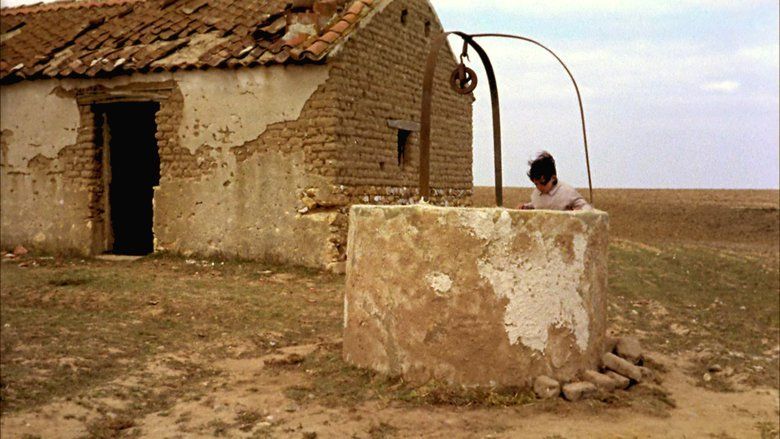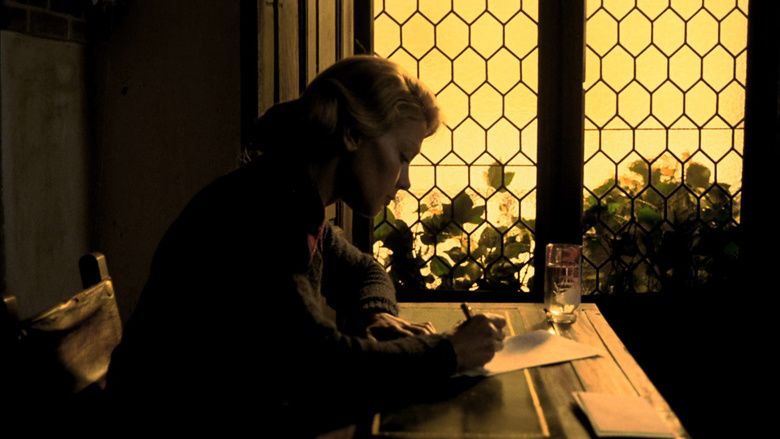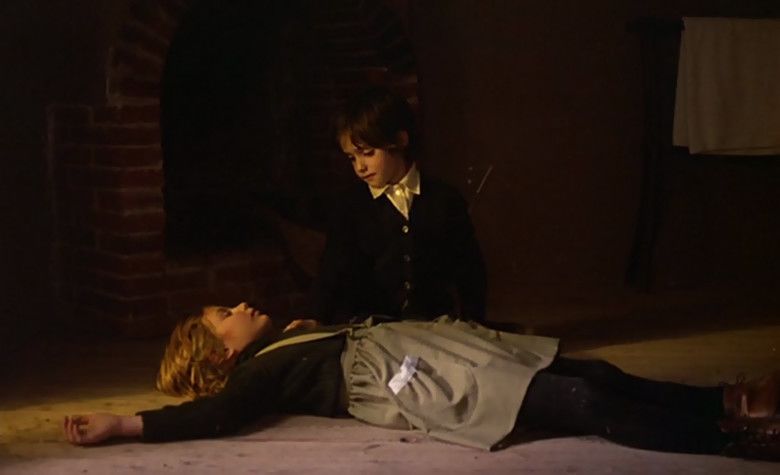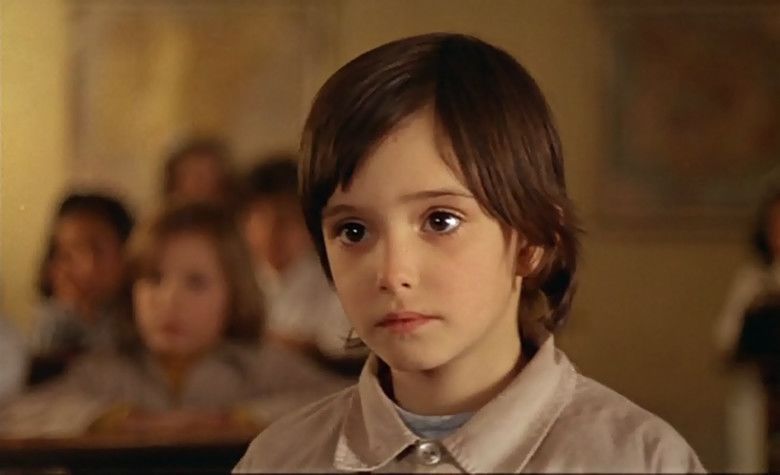The Spirit of the Beehive
8 /10 1 Votes
Director Victor Erice Country Spain | 8/10 IMDb Genre Drama, Fantasy Duration Language Spanish | |||||||||||||||||||||||||||||||||
 | ||||||||||||||||||||||||||||||||||
Writer Victor Erice (screenplay), Victor Erice (story), Angel Fernandez Santos (screenplay), Angel Fernandez Santos (story), Francisco J. Querejeta Screenplay Victor Erice, Angel Fernandez Santos, Francisco J. Querejeta Cast (Fernando), (Teresa), (Ana), Isabel Tellería (Isabel), Laly Soldevila (Doña Lucía), Miguel Picazo (Médico)Similar movies The Rescuers Down Under , Hotel Transylvania 2 , Dracula Untold , Hotel Transylvania , Van Helsing , Victor Frankenstein | ||||||||||||||||||||||||||||||||||
The spirit of the beehive 1973 victor erice
The Spirit of the Beehive (Spanish: El espíritu de la colmena) is a 1973 Spanish drama film directed by Víctor Erice. The film was Erice's debut and is considered a masterpiece of Spanish cinema.
Contents
- The spirit of the beehive 1973 victor erice
- Plot
- Cast
- Historical context
- Symbolism
- Production
- Critical reception
- Awards
- References

The film focuses on the young girl Ana and her fascination with the 1931 American horror film Frankenstein, as well as exploring her family life and schooling. The film has been called a "bewitching portrait of a child’s haunted inner life".

Plot

Six-year-old Ana is a shy girl who lives in the manor house in an isolated Spanish village on the Castilian plateau with her parents Fernando and Teresa and her older sister, Isabel. The year is 1940, and the civil war has just ended with the Francoist victory over the Republican forces. Her aging father spends most of his time absorbed in tending to and writing about his beehives; her much younger mother is caught up in daydreams about a distant lover, to whom she writes letters. The entire family is only ever seen together in a single shot towards the end of the movie. Ana's closest companion is Isabel, who loves her but cannot resist playing on her little sister's gullibility. Teresa writes to her past lover while she seems to stare out the window at the old house where Ana will find the republican soldier: "Little but the walls remain of the house you once knew, I often wonder what became of everything we had there." This supposes the house has a history for her, and implies the escaped republican soldier who will run straight to this now empty and crumbling house and hide in it may have been her lover.

At the beginning of the film, a mobile cinema brings Frankenstein to the village and the two sisters go to see it. Ana finds the film more interesting than frightening, particularly the scene where the monster plays benignly with a little girl, then accidentally kills her. She asks her sister, "Why did he kill the girl, and why did they kill him after that?" Isabel tells her that the monster didn't kill the girl and isn't really dead; she says that everything in films is fake. Isabel says the monster is like a spirit, and Ana can talk to him if she closes her eyes and calls him: "It's me, Ana."
Ana's fascination with the story increases when Isabel takes her to a desolate abandoned sheepfold, which she claims is the monster's house. Ana returns alone many times to look for him but finds only a large footprint. One day, Isabel screams from a distant part of the house, and when Ana comes to investigate, she lies perfectly still on the floor, pretending to be dead. That night, Ana sneaks out and while looking at the night sky, closes her eyes. In the next scene, a fugitive republican soldier leaps from a passing train and limps to the sheepfold to hide.
Ana finds the soldier hiding in the sheepfold. Instead of running away in terror, she feeds him and even brings him her father's coat and watch. This odd, wordless friendship ends abruptly when the Francoist police come in the night, find the republican soldier and shoot him. The police soon connect Ana's father with the fugitive and assume he stole the items from him. The father discovers which of the daughters had helped the fugitive by noticing Ana's reaction when he produces the pocket watch she had given to him. When Ana next goes to visit him, she finds him gone and fresh blood on the ground. Her father confronts her as she gazes at the blood, and she runs away.
While she is wandering in the woods alone that night, she finds a poisonous mushroom her father previously said will kill anyone who eats it. It is not clear if she does so but she later has a vision of the monster as she looks down into water; he gazes sadly at her, as in the 1931 film, and kneels beside her. We see Teresa read a letter she wrote to the man who lives in Nice, France, and burning it unsent, implying the love affair is over or that she will stop communicating with him.
A search party finds Ana physically unharmed the next morning, but she withdraws from her family, refusing to speak or eat. The doctor assures her mother that she will gradually forget the shock she's just experienced. Teresa is shown caring for Fernando after he falls asleep at his desk. At the end of the film, Ana recalls what Isabel said about calling the monster, and she stands alone by her bedroom window and closes her eyes.
Cast
Historical context
Francisco Franco came to power in Spain in 1939, after a bloody civil war that overthrew a leftist government. The war split families and left a society divided and intimidated into silence in the years following the civil war. The film was made in 1973, when the regime was not as severe as it had been at the beginning; however it was still not possible to be openly critical of the regime. Artists in all media in Spain had already managed to slip material critical of the regime past the censor. Most notable is the director Luis Buñuel, who shot Viridiana there in 1962. By making films rich in symbolism and subtlety, a message could be embodied in a film that would be accepted or missed by the censor's office.
Symbolism
The disintegration of the family's emotional life is symbolic of the emotional disintegration of the Spanish nation during the civil war.
The barren empty landscape around the sheepfold represents Spain's isolation during the beginning years of the Francoist regime.
At several points in the film Fernando describes in his writing his revulsion at the mindless activity of the beehive. This is possibly an allusion to human society under Francoism: ordered, organised, but devoid of any imagination. The beehive theme is carried into the manor house which has hexagonal panes to its leaded windows and a honey-coloured light.
At the start of the film, the authorities are using the Frankenstein film as a warning to the population about man's godless creations which have to be killed for the safety of the public. This is a veiled propaganda attempt to justify the violent overthrow of the Republican government in the civil war by intimating the monster to be the "godless" socialism of the Republic. This metaphor is repeated later in the film when the hunted republican soldier takes on a role similar to that of the monster in the 1931 film.
Ana represents the innocent young generation of Republican Spain around 1940, while her sister Isabel’s deceitful advice symbolises the Nationalists who are obsessed with money and power.
As the film closes we see a warming of Teresa's feelings and the possibility of a future revival of the family's emotional life and by inference the life of Spain.
Production
The location used was the village of Hoyuelos, Segovia, Castilla y León, Spain.
The four main characters each have a first name identical to that of the actor/actress playing them. This is because Ana, at her young age of seven at the time of filming was confused by the on- and off-screen naming. Erice simply changed the script to adopt the actors names for the characters.
Víctor Erice wrote of his choice of title: "The title really is not mine. It is taken from a book, in my opinion the most beautiful thing ever written about the life of bees, written by the great poet and playwright Maurice Maeterlinck. In that work, Maeterlinck uses the expression 'The Spirit of the Beehive' to name the powerful, enigmatic and paradoxical force that the bees seem to obey, and that the reason of man has never come to understand."
The film's cinematographer, Luís Cuadrado, was going blind during filming.
Critical reception
According to the DVD supplement "Footprints of a Spirit" in the Criterion Collection's presentation of Spirit of the Beehive, when the film was awarded first prize at the prestigious San Sebastian Film Festival, there were boos of derision and some people stomped their feet in protest. The film's producer said many in the audience offered him their condolences after the first screening in late 1973.
Years later, when the film was re-released in the United States in early 2007, A.O. Scott, film critic for The New York Times, reviewed it and lauded the direction of the drama, writing: "The story that emerges from [Erice's] lovely, lovingly considered images is at once lucid and enigmatic, poised between adult longing and childlike eagerness, sorrowful knowledge and startled innocence."
Film critic Dan Callahan praised the film's cinematography, story, direction and acting. He wrote, "Every magic hour, light-drenched image in Victor Erice's The Spirit of the Beehive is filled with mysterious dread....There's something voluptuous about the cinematography, and this suits the sense of emerging sexuality in the girls, especially in the scene where Isabel speculatively paints her lips with blood from her own finger...[and] Torrent, with her severe, beautiful little face, provides an eerily unflappable presence to center the film. The one time she smiles, it's like a small miracle, a glimpse of grace amid the uneasiness of black cats, hurtling black trains, devouring fire and poisonous mushrooms. These signs of dismay haunt the movie."
By 20 November 2012 the film had been entered into Roger Ebert's "Great Movies" section.
Currently, the film has a 100 percent "Fresh" rating at Rotten Tomatoes, based on nineteen reviews.
Awards
References
The Spirit of the Beehive WikipediaThe Spirit of the Beehive IMDb The Spirit of the Beehive themoviedb.org
